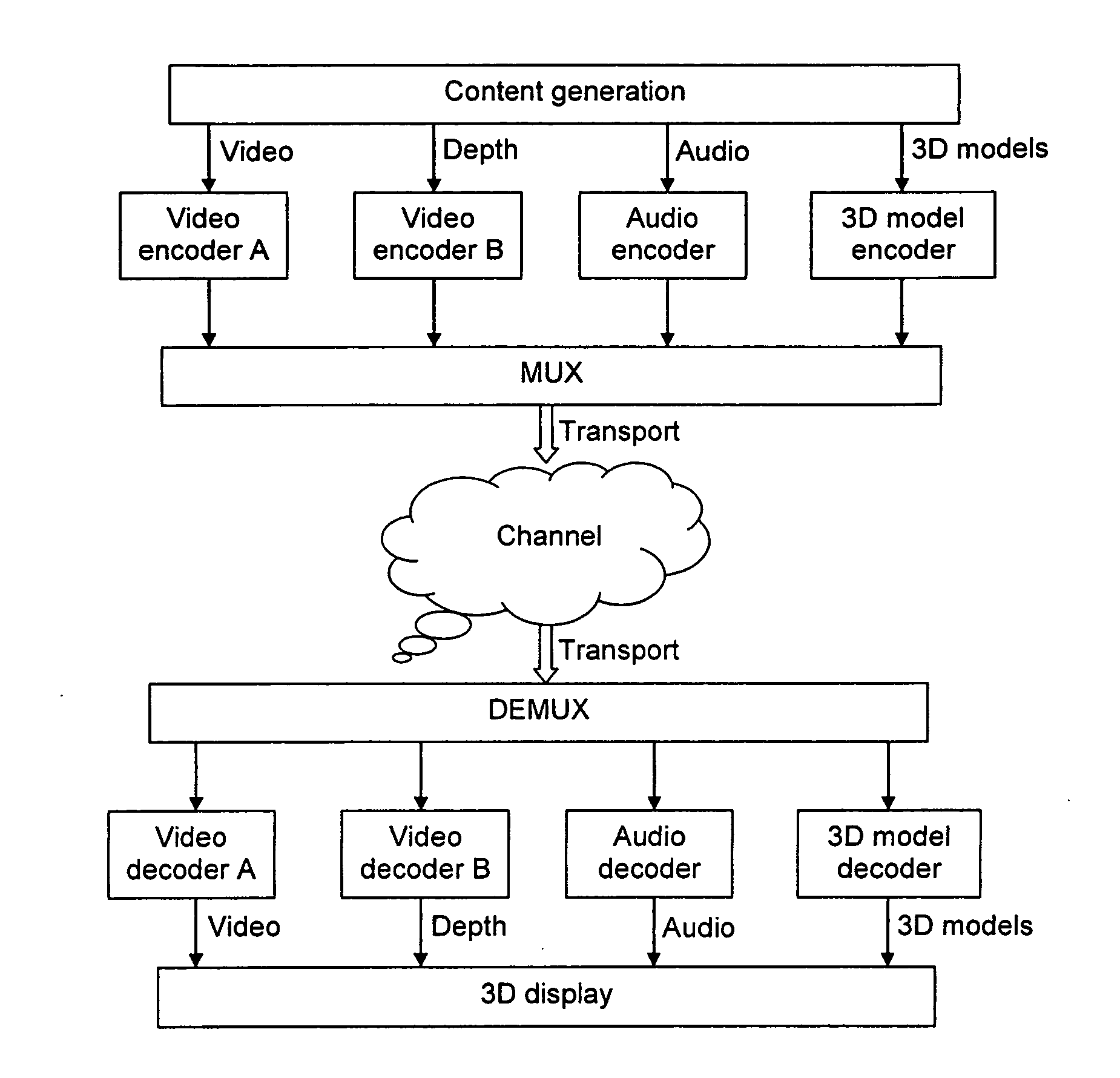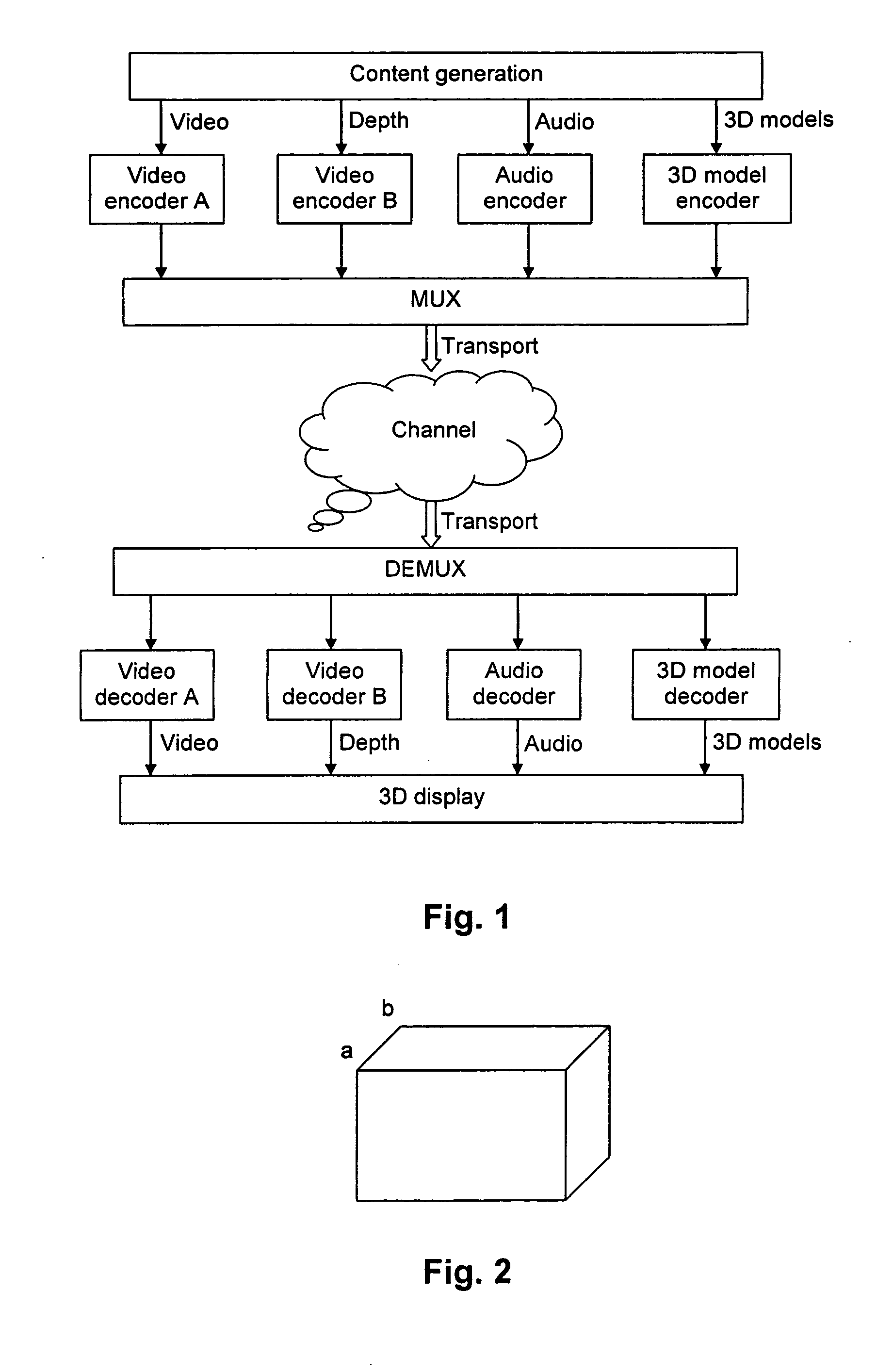Transmission of 3D models
- Summary
- Abstract
- Description
- Claims
- Application Information
AI Technical Summary
Benefits of technology
Problems solved by technology
Method used
Image
Examples
Embodiment Construction
[0036]FIG. 1 shows an example complete chain of stereoscopic content, from the content generation to the display. As shown in the figure, apart from the video and audio streams, which consist of traditional 2D program, a depth stream is transmitted so that viewers can enjoy stereoscopic images. Furthermore, a 3D models stream is advantageously transmitted to enhance the interactivity and 3D effects. All these streams are synchronized.
[0037]A 3D model is a data structure that consists, for example, of a list of vertices, a list of edges, a list of wedges, a list of faces and a list of material properties. A vertex represents a point in the 3D space, which can be represented by an ordered triplet (x, y, z). The first entry of the triplet conventionally represents the horizontal position and is typically denoted by x. The second entry represents the vertical position and is typically denoted by y. Finally, the third number represents the depth and is typically denoted by z.
[0038]An edg...
PUM
 Login to View More
Login to View More Abstract
Description
Claims
Application Information
 Login to View More
Login to View More - R&D
- Intellectual Property
- Life Sciences
- Materials
- Tech Scout
- Unparalleled Data Quality
- Higher Quality Content
- 60% Fewer Hallucinations
Browse by: Latest US Patents, China's latest patents, Technical Efficacy Thesaurus, Application Domain, Technology Topic, Popular Technical Reports.
© 2025 PatSnap. All rights reserved.Legal|Privacy policy|Modern Slavery Act Transparency Statement|Sitemap|About US| Contact US: help@patsnap.com



